When and if you go to cast your vote, do you ever consider what people did years ago in order to be enfranchised? In order to obtain a vote for you? Was the bombing of a Manchester park in England in 1913 justified in women's attempts to gain the vote ? Did it have a positive impact on the campaign ? Women's fight for a vote was at a time when most English men did not have a vote either. I want to show how the bombing was a reaction to other significant events and hopefully show how women's influence helped in the fight for total democracy, male and female.

The Suffragette Campaign and their bombing of Alexandra Park Manchester in 1913
by Veronica
A little known event in English suffrage history had its centenary in 1913. Here is a brief description of the background of why Suffragettes bombed Alexandra Park Manchester.
Was the bombing of a park justified to get the vote for women?
The Suffrgette Campaign and their Bombing of Alexandra Park Manchester 1913
Votes for Women
1913 was an eventful year in the campaign for women's suffrage in Britain. The campaign had started much earlier than this though and the Manchester area had been a hive of Suffragette activity for a considerable time.
To understand the topic better though we need to look further back in time. As early as 1819 women had been asking for a vote and women campaigners, including Mary Waterworth of Stockport Female Reformers, were present at the Manchester Peterloo Massacre where the right to vote was being aired. In 1832 Mary Smith of Yorkshire presented the first women’s suffrage petition to Parliament. It was rejected as a foolish petition with a claim that,
“Women are the gainers for being solely administered to by men. No woman on trial would prefer a female jury.”
The Times Newspaper stated that it was shocking and disgusting behaviour for another paper to have printed Mrs Smith’s petition for women’s rights and suffrage in its pages.
Lydia Becker founded the Manchester National Society for Women’s Suffrage in 1867. A few years earlier a woman named Emmeline Goulden had been born in Moss Side, Manchester to affluent, politically active parents. Her husband Richard Pankhurst and their children including Sylvia and Christabel were fully supportive of her campaign. Consequently in 1903, Women’s Social and Political Union (WSPU) was formed by Emmeline Pankhurst and two of her daughters. Mrs Pankhurst and her followers were arrested, tried and imprisoned on a number of occasions over the next decade for bombings, violent protests, egging politicians, marches and meetings.
1909 though saw the government becoming increasingly nasty too and when the Suffragettes went on hunger strikes in gaol, the disgusting practice of force-feeding began. This prompted the passing of The Prisoners Act four years later in 1913. It was soon referred to as “The Cat and Mouse Act” as it was like a cat playing with a mouse, catching it and releasing it. Under the terms of “The Cat and Mouse Act”, women could be released from gaol and then rearrested at any future time when they had regained their health after enduring gaol conditions. This enraged the Suffragettes even more. It is difficult for us to envisage this Act being passed in our so called civilised society and all this happening merely over the subject of voting.
The most notable event in Suffragette history was when Emily Davison died after falling under the hoofs of King Edward's horse Amner at the famous Derby race also in 1913. The Anti- Suffrage movement made a great deal of this, making out that Emily Davison had committed suicide and that she was obviously mentally unstable as anyone wanting female suffrage would be. What is little known is that Emily had a return ticket to go home from the races in her bag, (an unlikely purchase if she was planning suicide) and the film footage of the day shows Emily step forward and seemingly try to touch the King's horse. A good view of this can be found on britishpathe.com. Type in Emily Davison 1913 on britishpathe site and you will find film footage of the event. Decide for yourself. But to me, this does not look like a woman intending to kill herself by jumping in front of the King's horse!
Emily died four days later but the consequence encouraged an increasingly violent Suffragette campaign which in November 1913 saw the bombing of 3 public gardens in England namely Kew Gardens in London, Begbroke at Frenchay near Bristol and Alexandra Park in Manchester.
The simultaneous attacks around the country occurring on the night of 10th/11th November 1913 were nationally attributed to the Suffragettes although the women never admitted it. Suffragette literature and leaflets were found at some of the sites along with women’s footprints. I shall look briefly at the least known of these events.
There had previously that year been Suffragette attacks on Manchester Art Gallery. Three Suffragettes had damaged the most valuable paintings in the collection, so Suffragette attacks on Manchester were not unknown. The Pankhursts had used Alexandra Park for many marches and rallies so was it significant that this park was used?
In the early hours of 10/11th November, the cactus house of Alexandra Park was damaged by a bomb. The £10,000 cactus collection been donated many years earlier by the widow of wealthy merchant Charles Darrah of Stockport. Residents were awoken at 4.20am by an explosion from the park. Many assumed it was a gas explosion. The gardens of local houses were strewn with glass, the door of the cactus house was blown off and the glass shattered. The bomb had been placed by the greenhouse door and it was only when the park opened in the morning that the damage was discovered.
The bomb was home made with an 18 inch pipe and had been full of metal pieces, powder and iron filings. In an effort to annoy the Suffragettes, the bombing was described as a failure. There was little damage to the greenhouses other than broken glass and some damage to the plants.
The outbreak of World War 1 saw an end of campaigning as women joined in the war effort and did such remarkable work that in 1918 in The Representation of the People Act passed allowing men over 21 and women over 30 to vote. Women were still not given the vote on the same terms as men because with the thousands of young men killed in World War 1, there would have been more women voters than men and the government could not have that happening! It was not until 1928 that women over 21 could vote on the same terms as men. And only in 1970 that women received the same pay as men for doing the same job.
A long struggle, and one I believe that should not be forgotten when we glibly turn up to vote or receive our pay slip.
Would women have received the vote in 1918 were it not as a recognition for their contribution to the war effort? Did the lengthy, violent campaign have an impact? Does the end justify the means? The bombings of the gardens were timed for when there would be no people around to be hurt by the blast. Were they justified?
You might also like
Old and Traditional Recipes of Lancashire, EnglandThe traditional food eaten by people in the North West of England was shaped ...
Henry Hunt ; The People's OratorAs a follow up to the Peterloo article from last month, I was asked to do a p...
Women and Children First? Titanic and the SuffragettesVotes for Women or boats for women? In 1912, the press pushed to make it eith...
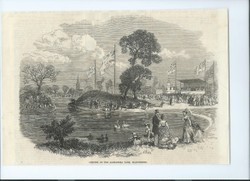

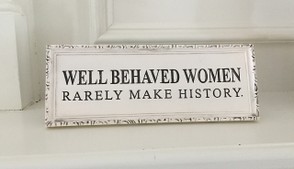
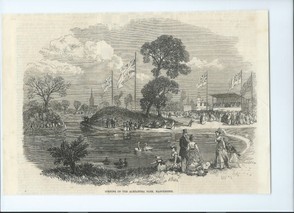

 Blarney Castle and Gardens, County Corkon 06/01/2023
Blarney Castle and Gardens, County Corkon 06/01/2023
 An Cóbh, Corcaigh, Eireon 05/29/2023
An Cóbh, Corcaigh, Eireon 05/29/2023
 Dublin ; The Book of Kellson 04/04/2023
Dublin ; The Book of Kellson 04/04/2023
 The Bee Tree Community CIC;- an online support communityon 08/24/2022
The Bee Tree Community CIC;- an online support communityon 08/24/2022
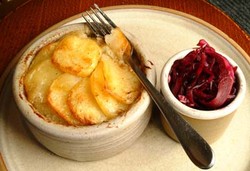
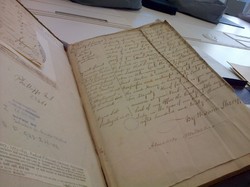
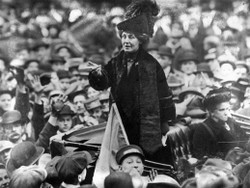
Comments
Derdriu
Yes indeed how clever of you to find this. The Suffragettes damaged paintings in Manchester Art gallery also to highlight their cause. This again was 1913 , which was a major turning point in the Suffragette campaign because of the force feeding of the women in gaol.
Veronica, In beginning to re-visit your 108 (number of perfection in Buddhism) articles, I came across the link below. The link is interesting in the diversity and seeming timelessness and timeliness of activities and collections.
In trying to research the paintings, all I uncovered is a vague reference (under Historical Note, under Details in the article "Manchester Art Gallery" on the Historic England site) to damage, to the tune of £100, April 3, 1913, by Lillian Forester and Evelyn Manesta to 13 paintings by Burne-Jones, Millais and Rossetti in Room 2.
Derdriu
I don't know what happened to the paintings but I have found you a really excellent page on the art gallery website which you may find of interest.
http://manchesterartgallery.org/blog/...
In 1970 there was huge opposition to "equal pay for equal work" for woman. The woman who worked at Ford cars in London led the way.
Veronica, Very nice explanation and historical event re-creation!
Did the paintings that were damaged have some significance that would be repugnant to women's rights? How was the attack -- by acid? by knives? -- carried out? Was the damage repairable, which paintings were involved and would visitors to the Manchester Art Gallery see them today?
Was there a lot or minimal opposition to the equal work, equal pay passage in 1970?
I went to see the film " Suffragette " last week and I thought it was marvellous. A very good depiction of an important aspect of social and political history.
If you get a chance to see "Suffragette" you must go. IT is almost accurate historically too.
Hello Arthur, yes our city,
I only discovered it when I was working at the park. I did I slot for BBC NW tonight on this topic a few years ago and had lots of positives about it so I thought it would make a good write up. The glass houses overlooked Princess Road .
I have another article on Peterloo's Henry Hunt which may be of interest.
https://wizzley.com/henry-hunt-the-pe...
I never knew of this event in my city - wow!
GREAT NEWS. 20th January 2016
It has just been announced that the new statue In Manchester is going to be of Emmeline Pankhurst.
Out of 20 statues in the city there is only one statue of a woman and that is of Queen Victoria.
The people have voted for Emmeline Pankhurst to be commemorated by statue in the city.
I am so pleased. She helped to get the vote for women AND men.
The new film "Suffragette" is to be released very shortly and no matter where you are in the world I hope you get a chance to see it. I do not know how historically accurate it is but it should be a good watch and just think, Emmeline Pankhurst , portrayed by Meryl Streep in the film, is the very lady who held her rallies in the park above.
The anniversary of this, the 102nd, is only about 11 weeks away in November . It is never acknowledged in Manchester at all. I believe all these things should be remembered .